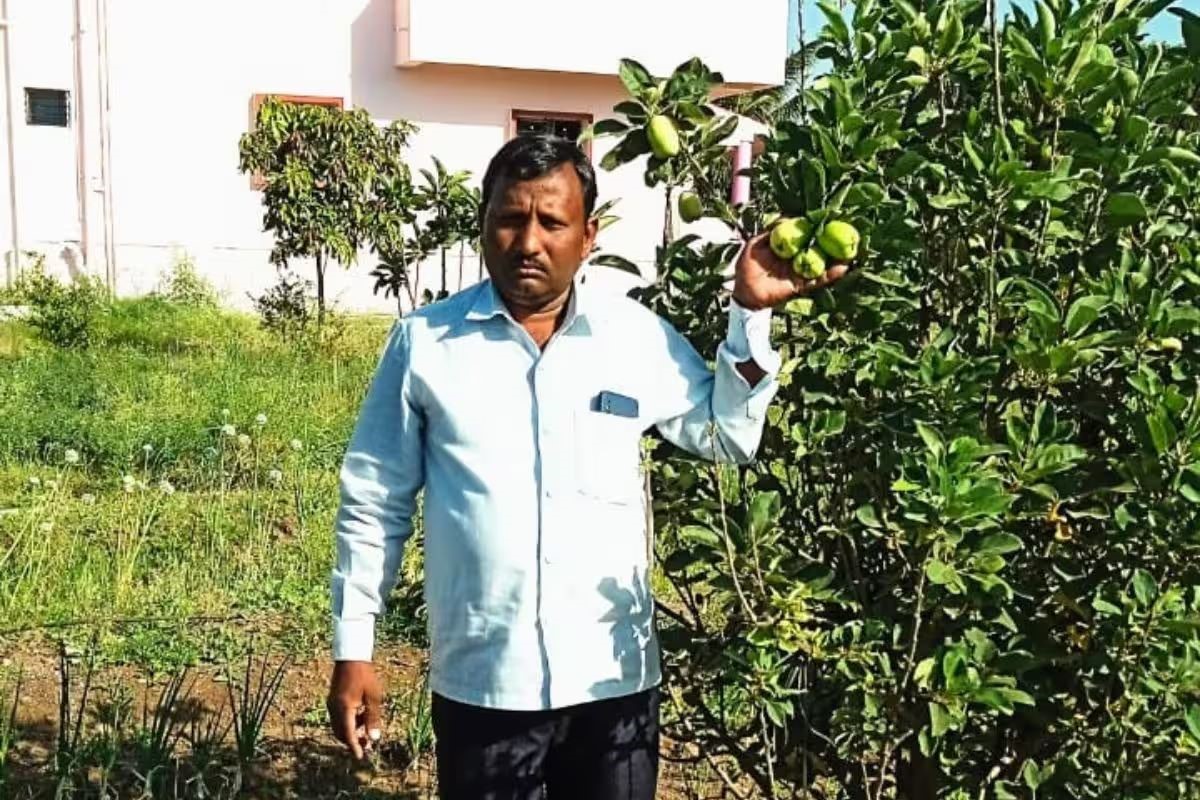HRMN-99 Apples: The Hidden Gem of Orchard Diversity
Vitthal Gadakh*, M. Yasin, Asha Kushwah and Akhouri Nishant Bhanu
July 21st 2025, 5:43:09 am | 5 min read

After oranges, bananas, and grapes, apples are the fourth most produced fruit worldwide and the oldest and most significant temperate fruit in terms of commerce. The world's largest producer of apples is China. It is mostly cultivated in Kashmir, Himachal Pradesh, and the Uttar Pradesh highlands. In the fiscal year 2022, more than 2.4 million metric tonnes of apples were produced in India.
Apples may be cultivated in the Himalayan range at elevations between 1,500 and 2,700 metres above sea level. During the winter, these altitudes undergo 1,000 to 1,500 hours of chilling or cooling, or days when the temperature stays at or below 7°C. During the apple-growing season, the ideal temperature ranges from 21 to 24 degrees Celsius. Apple trees require 100 to 125 cm of yearly rainfall, distributed evenly throughout the year, for optimal development and fruiting. A surplus of precipitation and fog in the vicinity of fruit ripening would lead to subpar fruit with uneven fruit colour development and fungus patches on the fruit's surface. Lower chilling hours cause a variety of problems for apples, including delayed leaf emergence, closed flower buds, reduced fruit size, disease and insect infestations, and a shortened maturity cycle.
The tropical and subtropical regions are home to apple plantations and development because of the climatic conditions necessary for apple growth. A farmer from the Bilaspur District of Himachal Pradesh named Hariman Sharma developed a tropical variety that made it feasible to cultivate apples in tropical climates, something that was previously unthinkable. He developed and marketed a novel apple type that grows well in plains, as well as in tropical and subtropical regions where summer temperatures can reach 40°C to 45°C. This apple cultivar (HRMN-99, Hariman Selection) does not require long periods of severe cooling to bloom and bear fruit.
When Hariman Sharma bought some apples to eat in Ghumarwin village, Bilaspur, in 1998, he threw away the seeds in his backyard. He discovered an apple seedling in his backyard in 1999 that had grown from the seeds he had thrown away the year before. As a progressive farmer with a strong interest in horticulture, he recognised the unusual nature of an apple tree thriving in a warm location like Paniyala, 1,800 feet above sea level. The plant began to flower after a year, and in 2001 he saw fruits on the plant. By 2005, he established a miniature apple orchard thanks to his experiments with grafting the scion, or young shoot, which he had kept as a "mother plant." NIF (National Innovation Foundation) provided financial and technical support for establishing and expanding the nursery, besides aiding the registration of the variety under the Protection of Plant Variety and Farmers Rights Act, 2001.

(Kakasaheb Sawant Farmer from Sangli District Maharashtra Growing HRMN-99 Apple)
There are two varieties Anna and Golden Dorsett which are low-chilling varieties developed by Punjab Agriculture University that require 100 hours of chilling temperature. A molecular study was also performed for the characterization of the HRMN-99 apple variety in comparison with check varieties by Gujarat State Biotechnology Mission, Gandhinagar. The fruit of HRMN-99 has distinguishing features like medium anthocyanin colouration, conical shape, medium-sized eye basin, long length and shallow depth cavity of stalk. All three varieties were cultivated in seedling rootstocks, grown as spur-type trees and capable of self-pollination. The fruit of HRMN-99 was found to be bigger in size with very soft, sweet and juicy pulp. Skin colour was stripped red over yellow during maturity. Whereas Anna variety was found with crispy pulp with red blush and yellow skin. Dorsett-golden fruit was comparatively smaller with slight red, and yellow skin and sweet-sour pulp. The average fruit weight of Anna was found as 136 g followed by 129.4 g in HRMN-99 and 67.6 gm. in Dorsett-golden. The fruit length of HRMN-99 was found as 70.4 cm, whereas in Anna and Dorsett-golden it was 69.6 and 50.2 gm. respectively. The average fruit width of HRMN-99, Anna and Dorsett-golden was 6.62 cm, 6.68 cm and 5.06 cm respectively. During SSR fingerprinting, it was exhibited that the accessions HRMN-99 and Anna clustered together with common accessions, whereas Dorsett-golden formed a separate cluster with the other two accessions and was different from HRMN-99 and Anna confirms its diversity and superiority over other low chilling varieties Anna and Dorsett golden.
HRMN-99 Characteristics :
| Height | 6 to 7 feet |
| Bloom Spread | 1 foot |
| Bloom time | 6 months in a year |
| Anthocyanin colouration | Medium |
| Fruit Colour | stripped red over yellow |
| Fruit shape | Conical |
| Eye Basin | Medium Sized |
| Fruit Weight | 129.4gm. |
The common characteristics of the apple variety are that it can be grown in high-temperature areas, is scab disease tolerant, the plant height is up to 12-15 feet, fruiting starts after the third year of the plantation, flowering starts in early January and harvesting can be done after six months (June). Seasonal pruning of grown plants is needed. The ripe fruit colour is yellow-red with normal fruit size and sweet-sour in taste. So far this variety is having promising results in plain areas. It is presently growing in 27 states of India and has found buyers in countries like Nepal, South Africa, Zambia and Germany. Bihar Horticulture Department decided to launch a pilot project to grow fruit in seven districts of the state from 19th January 2022. However, the HRMN-99 variety needs improvement such as it has a low shelf life (10-12 days), non-synchronised flowering and low fruit setting and Hariman Sharma is working to solve this problem of variety.
Though the apple crop is very sensitive and depends on yearly climate, cultivars like HRMN- 99 will perform better if cultivated with appropriate soil management and crop practices.